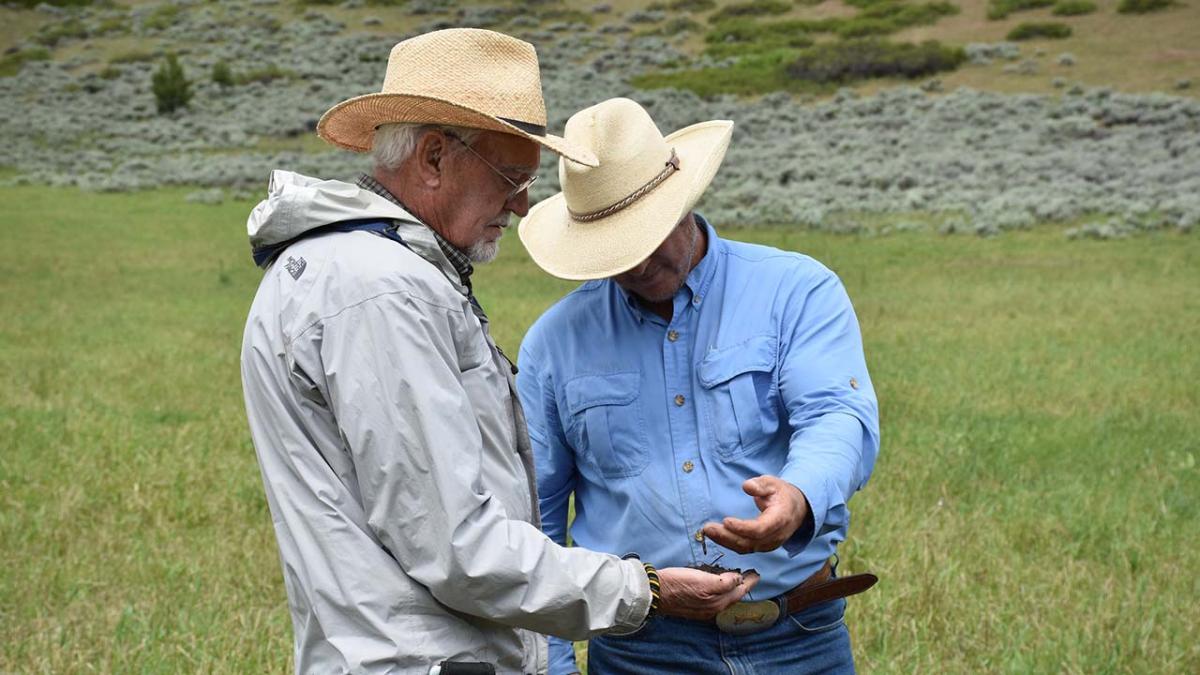USDA NRCS/Flickr
This article was first published in the September 2021 edition of the Society of Decision Professionals newsletter.
Most individuals are reactive in their decision-making. Recognizing decision opportunities is equivalent to recognizing two or more distinct choices at a given point in time. Consequently, making decisions becomes equivalent to solving a problem. Which is better, choice A or choice B or, possibly, choice C? Adding more choices to consider just makes the problem harder to solve.
This alternative focused thinking limits the quality of decisions. On the other hand, tuning to objectives and thinking through what would be the ideal outcome, as well as any horrible outcomes you are trying to avoid, can open up a thought process that reveals new and better alternatives that lead to an increase in the quality of decisions made.
The Nebraska Ranch Practicum is an 8-day educational program spread out over eight months from June to January each year. In the Practicum, we immerse students in ranch management decision-making, both tactical and strategic. Examples include determining the ideal timing and length of the calving season, pasture rotation schedules, animal nutrition management practices, and a number of other practical ranch management choices. Students participating in the Practicum include graduate students as well as active ranchers, veterinarians, and other professionals interested in ranch management.
Practicum students get on-site, hands-on experience assessing current information at the Gudmundsen Sandhills Laboratory, a working ranch owned and operated by the University of Nebraska-Lincoln. Using data to make decisions is a point of emphasis throughout the course. However, up until a few years ago, no formal decision-making training was part of the curriculum.
Since 2015, students start the Practicum experience with a two-hour introduction to quality decision-making. Students use a decision-making process to learn the importance of establishing the decision context including identifying the objectives you wish to achieve by making the decision, the internal situation you are dealing with, the relevant external information to consider, and the risk and uncertainty involved. They walk through the process of creating good alternatives, evaluating tradeoffs, and making a decision. Finally, we wrap up the experience with a short discussion of the importance of committing to implementing the choice.
The rest of the Practicum experience continues as an issue-based course taught by faculty members in animal science and agronomy without any significant time spent referencing back to or using the formal decision-making process introduced at the beginning of the course. The question is, does this limited exposure to decision training have a positive effect on the decision-making skills of the participants?
In 2016, Johannes Siebert and Reinhard Kunz published a scale of proactive decision-making in the European Journal of Operational Research. This scale describes four dimensions concerning cognitive skills (systematical identification of objectives, systematical identification of information, systematical identification of alternatives, and using a decision radar) along with two dimensions covering proactive personality traits (striving for improvement and showing initiative). A video providing more detailed information about this research can been accessed following this link. With the generous assistance of Dr. Siebert, we are using this assessment tool to determine pre and post proactive decision-making skills of Nebraska Ranch Practicum participants since 2017.
The results consistently indicate improvement in Practicum participants’ cognitive skills over the course of eight months. Feedback from students indicates emphasis on the identification of objectives during the decision training helps open the process for identifying more and better alternatives. Systematic identification of alternatives is one of the specific cognitive skills that consistently shows improvement from beginning to end of the Practicum.
Other faculty are seeing the value of formalizing decision training into the course. As a result, the present Practicum curriculum shows a large increase in the application of the decision training in other parts of the course. Decisions involving management of the calving season, selection of replacement heifers, management of cull cows, retention of calves, and sales of calves are now taught with time allocated for revisiting the decision-making principles introduced in the decision training at the beginning of the course.
In conclusion, although agriculture presents a challenging environment to teach decision-making skills, agricultural professionals are receptive to the training. Even with limited exposure to decision training in issue-based courses, we see growth in proactive decision-making cognitive skills. There are numerous opportunities for decision science professionals to contribute to the conversation.
